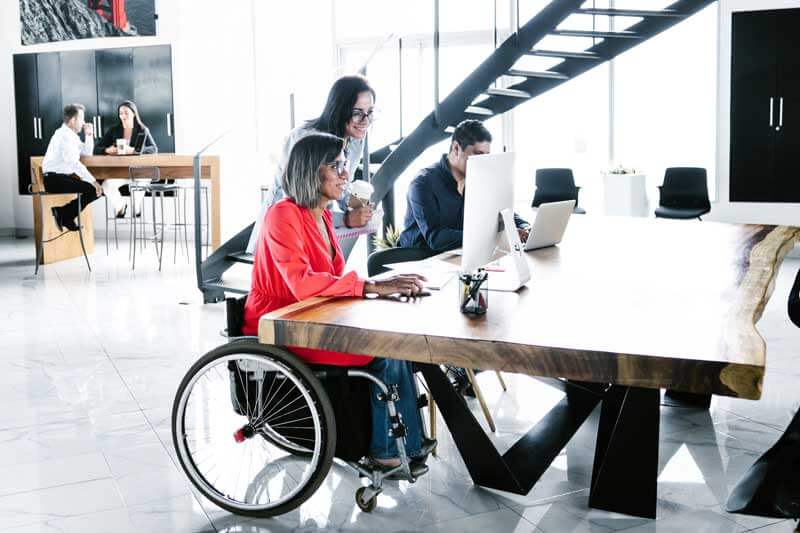Millions of people with physical or mental disabilities in the United States need to work in order to support themselves and their families. They might have difficulties performing some tasks that able bodied people would not, but they still deserve a safe workplace. This article will highlight some ways managers successfully provide safety training to those with disabilities.

Keeping People with Disabilities Safe on the Job
The Americans with Disabilities Act was enacted in 1990 to protect the rights of people with disabilities and to ensure that they have equal opportunities. The act covers a wide range of disabilities, including both physical and mental impairments. Employers are required to provide reasonable accommodations for employees with disabilities, and this includes safety training.
When it comes to employee safety training, people with disabilities must be given the same training as everyone else. This requires that the training be accessible and effective. Here are some ways you can keep those with disabilities safe on the job:
1. Use clear and concise language.
When presenting information during employee safety training, use language that is easy to understand. Avoid jargon or technical terms that might not be familiar to everyone. "Each employee learns in very different ways, says Linda Trembley, a Project Manager for Bona Fide Conglomerate, a non-profit maintenance company that mainly employs people with disabilities. "Learning how to communicate with each employee, where they will understand and comprehend in the easiest way possible for them, is an ongoing consideration."
2. Repeat important points.
Make sure to repeat key points throughout the training so that everyone has a chance to hear and absorb the information. "When training an individual with a cognitive disability, I approach things with patience first to find out what strengths or limitations that individual has," says Richard Pearl, a Site Manager for Bona Fide CGLM.
3. Use multiple formats.
Some people learn best by listening to audio, while others prefer visual aids such as charts or diagrams. To accommodate different learning styles, use a variety of formats when presenting employee safety training material. "Safety Training is lecture-based, but for my deaf employees, I have one or two sign language interpreters present for both types of training," Linda says.
4. Provide hands-on opportunities.
Many people with disabilities benefit from learning in real-time. "Hands-on training and written lists work the best for my staff," confirms Linda.
Preparing the Workplace
There are a few key things to keep in mind when preparing for disability in the workplace:
5. Employees may have different reactions to emergency situations.
It's important to remember this and adjust your safety procedures accordingly. "I want to provide a safe working environment that the individual feels comfortable with and can be reassured of their accomplishments," Richard says. For example, employees who are deaf or hard of hearing will need to be able to see any alarms that are being used. Employees who are blind or have low vision will need to be given verbal instructions on what to do in an emergency.
6. Special accommodations
Employees with disabilities may need special accommodations in order to safely participate in workplace training exercises. Consulting with each individual employee is key to finding out what accommodations they might need.
7. Breaks
Employees with disabilities may require more frequent or longer breaks during work hours. Again, this is something to keep in mind when planning safety training exercises.
8. Accessible evacuation routes
For employees who use wheelchairs or other mobility devices, make sure that evacuation routes are accessible and that there is a plan in place for how they will be evacuated in an emergency.
9. Present safety information in an understandable manner
For employees with cognitive disabilities, make sure that the safety information is presented in a way that they can understand. This may mean using visual aids or providing step-by-step instructions.
By taking these considerations into account, you can make sure that your workplace is prepared for employees with disabilities. By ensuring their safety, you can create a productive and inclusive environment for everyone in your company.
When it comes to employee safety training, people with disabilities should not be left out. While it may require some extra effort and planning, you can ensure that everyone in your workplace has the knowledge and skills necessary to stay safe on the job.
This extra effort will provide an inclusive and safe environment for everyone. As Richard relates, "Everyone on my staff is treated as an equal by myself and each other. Here on site, we welcome each individual with compassion and respect and do our best to complement their abilities."
About the Author
Charley Ross is an artist and writer for Bona Fide Conglomerate from Portland, Oregon.